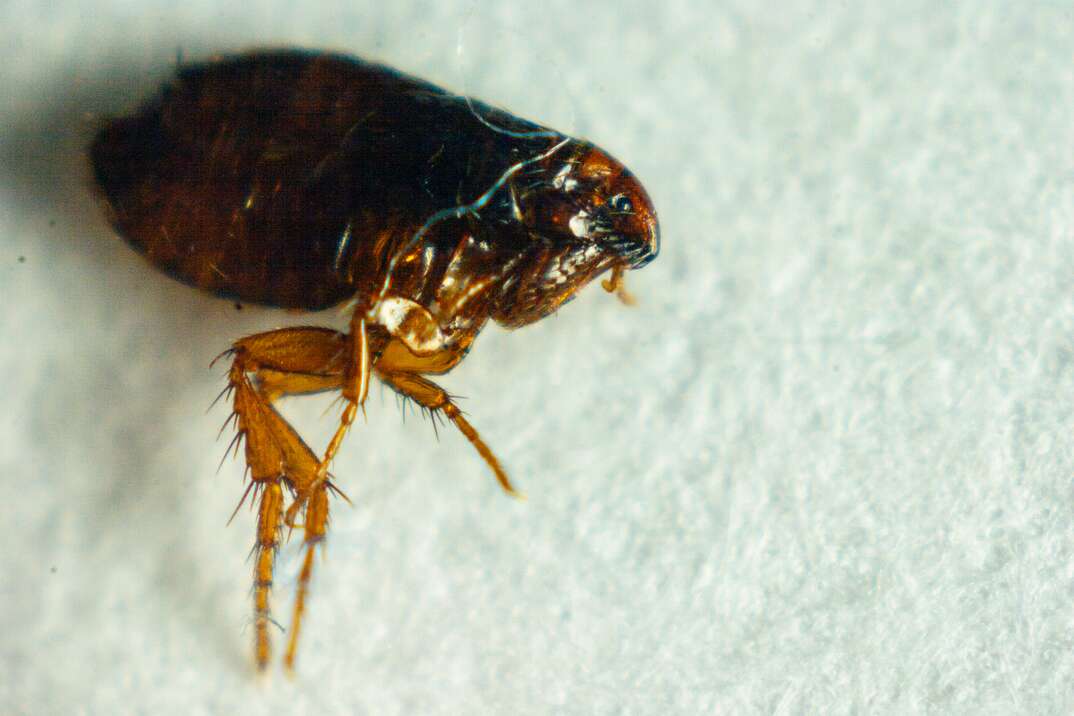- AppliancesElectriciansHVACLandscapingLocksmithPest ControlPlumbingRenovationRoofingT V RepairAll Home Improvement
- Car AccidentClass ActionCorporate LawCriminal DefenseDivorce LawEmployment LawFamily LawFinancial LawLegal AidMedical Injury LawyersMedical MalpracticeReal Estate LawWater Fire RestorationAll Legal
- InvestmentRetirementAll Finance
- Animal InsuranceAutoGeneral InsuranceHealth PolicyHome RentersAll Insurance
- DentalHealth SpecialistsAll Medical
- Animal CareVeterinaryAll Pets
- Auto GlassTowingAll Automotive
How to Know If Your Home Has Fleas

In a house where pets are welcome, pests sometimes like to make themselves at home, too. Sometimes, your scratching dog or cat alerts you to the presence of fleas in the house, and other times, you may not notice until you start feeling the itch yourself.
Read More Pest Control Articles
Fortunately, you can get rid of fleas and prevent future infestations to make life more comfortable for everyone.
One of the biggest signs of fleas is a pet that can't seem to stop scratching, biting or licking at its fur and skin. If a pet has a particularly bad case of fleas, you might notice pale gums or weakness, which are signs of anemia caused by loss of blood.
You might also see fleas jump onto your skin, furniture or curtains. Fleas also leave behind waste, sometimes called flea dirt, on furniture or pet beds where your cat or dog has been resting. This residue resembles small black dots.
You can test for flea infestations in your home by putting on white socks and shuffling your feet around on carpets or rugs. Because fleas like heat, they're attracted to your feet and ankles, so you can check the socks for flea debris or live fleas.
You may also notice flea bites on your skin. These typically present as small red dots that are extremely itchy. If you get bitten, you can wash the area with antiseptic soap and apply an ice pack or hydrocortisone cream to relieve the itching.
How Do Fleas Get in Your Home?
Fleas are brought into the home on pets or people, and if there are a lot of fleas in the nearby environment, it can be hard to keep them out of your house. They jump onto outdoor pets or onto the feet and ankles of humans and get carried into the home.
Adult fleas require animal blood to survive, so cats and dogs are the most common sources of flea infestations. Pets that are allowed outdoors often bring fleas inside when they return. It's usually easy to identify the culprit if you have dogs or cats. Flea bites are especially itchy, which is why excessive scratching in pets is one of the first signs of a flea infestation.
If you're wondering how to get rid of fleas in your house, the first step is to determine the source. If you find fleas on your pets or they show signs of having fleas, talk to your veterinarian about appropriate flea treatment for your cat or dog.
Once your pets are treated for fleas, start treating your home interior. A single flea can lay up to 50 eggs a day, and flea eggs can take days or weeks to hatch and develop from larvae to adult fleas, so just ridding your home of existing fleas isn't enough.
Vacuum and steam clean any carpets, rugs, mattresses and upholstered furniture. Wash bedding, including pet beds or blankets used by pets, in hot water and detergent to kill adult fleas and flea eggs.
You might need a whole-home flea treatment for the house if the infestation is particularly bad. Call a pest control expert if you can't seem to get rid of fleas yourself.
More Related Articles:
- What to Look For When Hiring an Exterminator
- Are Pest Control Products Dangerous For Kids and Pets?
- What Are Ultrasonic Pest Repellers?
- 10 Ways to Prevent Termites
- How to Spray for Mosquitoes
Preventing Future Infestations of Fleas in a House
Knowing how to kill fleas may get rid of fleas that are currently in your home, but you also need to take precautions to prevent future infestations. Maintaining a regular cleaning schedule and keeping your pets on a flea control regimen using a topical flea treatment helps keep a variety of pests at bay, including fleas. Most topical flea treatments for pets continue killing fleas for up to a month, interrupting the life cycle by destroying newly hatched fleas before they can reproduce.
You can also preemptively treat areas of your home where frequent infestations occur. Sprays and powders designed to kill fleas and other pests can be applied to carpets or furniture to kill any insects that get inside your home.
Elocal Editorial Content is for educational and entertainment purposes only. Editorial Content should not be used as a substitute for advice from a licensed professional in your state reviewing your issue. Systems, equipment, issues and circumstances vary. Follow the manufacturer's safety precautions. The opinions, beliefs and viewpoints expressed by the eLocal Editorial Team and other third-party content providers do not necessarily reflect the opinions, beliefs and viewpoints of eLocal or its affiliate companies. Use of the Blog is subject to the
Website Terms and Conditions.The eLocal Editorial Team operates independently of eLocal USA's marketing and sales decisions.



